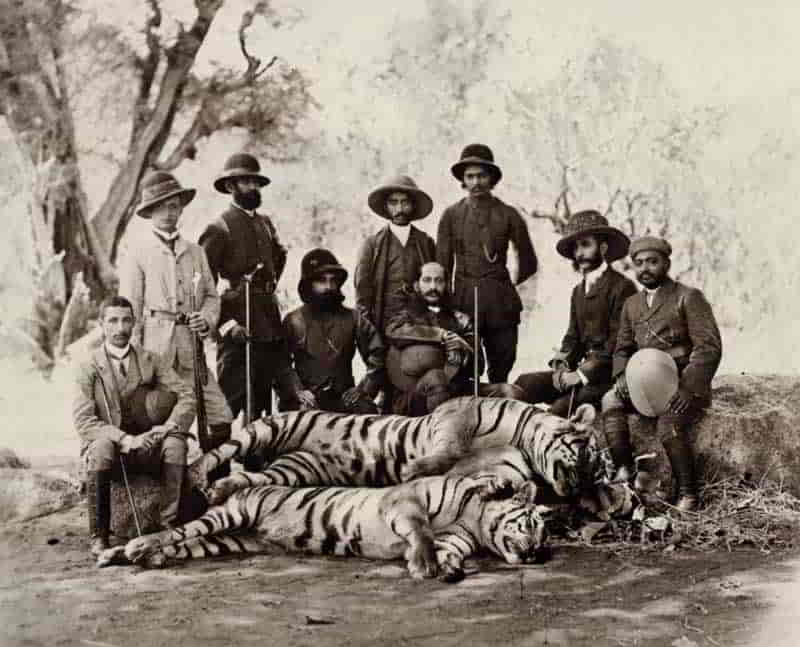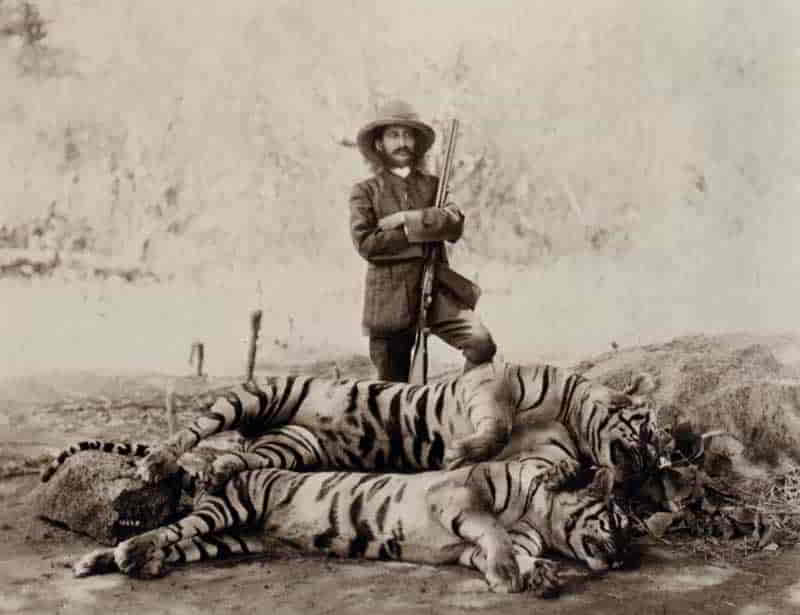Mahbub Ali Khan, Asaf Jah VI
Fath Jang Mahbub Ali Khan Asaf Jah VI II. ( Born August 17, 1866 Purani Haveli Hyderabad, † August 29 1911 in Falaknuma Palace of Hyderabad ) was from 28 February 1869 until his death, the Nizam of the Indian princely state of Hyderabad and thus to protocol highest standing of Indian princes in colonial times. His full title, in the tradition of the Mughal court was: Lieutenant - General Asaf Jah, Muzaffar -ul- Mamalik, Rustam -i - Dauran, Arastu -i - Zaman, Nizam -ul- Mulk, Nizam -ud- Daula, Nawab Mir Sir Mahbub Ali Khan Bahadur Fath Jang, GCB, GCSI.
Youth
After his father Asaf Jah V died when the boy was about three years old, he and his empire under the reign of Salar Jung I. together with Shams ul- Umara. He was educated by private tutors, including by the brothers John and Claude Clerke, both captains in the Indian Army. He had his first public appearance in 1877 in Delhi on Proclamation Day. On this occasion he received the Kaisar -i - Hind Gold Medal. The British Viceroy Lord Ripon, which he had been introduced in 1883 in Calcutta, agreed to the investiture of the 18 -year-olds, which was held in Hyderabad Feb. 5 1884 the presence of the Viceroy. His first wife was Begum Amat- uz - Zahrunnisa. His eldest son died in 1887.
Rule
The imperialist policy of the British, but very highly of him, he supported by contingents of troops in Egypt in 1885 and the offer against an expected Russian invasion ( Afghanistan ) to draw into the field, and Rs 600,000 to pay. This offer was the impetus for the founding of the Imperial Service Troops, contingents of the princely armies, which were provided to the British available since 1889. They served - under British officers - in the colonial wars during the Boxer Rebellion, the first campaigns in Somaliland and on the border with Afghanistan.
A first turning away from the absolutist form of government came on February 20, 1893 with the promulgation of Qanoon -cha- Mubarak, making the sofa (title: Madar -ul- Moham ) added some deputy ministers ( Moin -ul- Maham ) and a legislative Council, was charged with first six appointed members created. This, expanded in the following years, but could not initiate legislation, but only discuss predetermined topics and not do anything about what the rights of the ruler would have limited the slightest. Changed in this state until 1948 nothing. The state was from the devastating famine in 1898 and 1900-02 ( officially 1 ½ million starved ) greatly affected with the following epidemics. In this respect, economic development - in the capitalist sense - took place, it was limited to the capital city and the surrounding district ( Atraf -i - Balda ). These areas, about one-tenth of the country was as Sarf -i - kas - country private property of the Nizam. In financial matters he was extremely generous, but also naive, be, which is why it 's police chief was easy to cheat him in 1887 in the award of the mining concession to the Hyderabad ( Deccan ) Company for £ 125,000. The Nizam was wearing a garment only twice if it had been cleaned in Paris and reserved two floors of one wing of the palace for wardrobe. From horse racing and the rise of automobiles, he was thrilled. Three of the acquired Rolls- Royce were still used by his son with his silver jubilee.
In his reign covered the agreement which allowed the British to annex the past 50 years, " leased " province Berar Central Provinces her. September 28, 1908 on the banks of Musi passing caused havoc in the capital.
At Lord Curzon's meeting of the princes ( Durbar ) 1903 in Delhi, he took part with a bodyguard of 50 horsemen and 200 footmen. S. M. Kaiser Wilhelm II to let give him the Prussian Red Eagle Order condescended 1911.
He died 46 years old after a stroke in the Falaknuma Palace. He is buried, like his predecessors, in the Mecca Mosque of Hyderabad.










